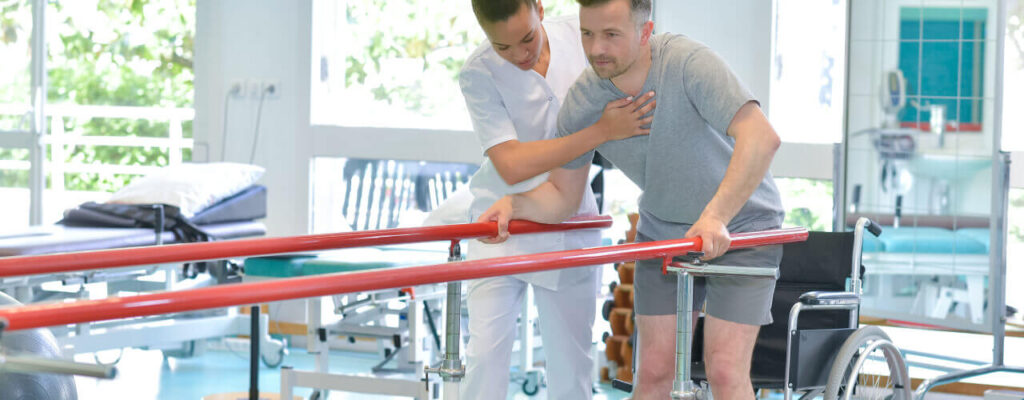3 Ways Post-Surgical Rehab Can Aid In Your Recovery

Every year, our physical therapy team meets thousands of individuals recovering from surgery. Physical therapy is a safe, natural, and healthy way to aid your body in getting better after dealing with the stress that accompanies an operation.
Whether you’re undergoing a joint replacement, knee surgery, or some other procedure, we’re confident that working with a physical therapist can help you heal up and get back to your active lifestyle as efficiently and safely as possible.
You might be wondering why physical therapy is so important in the post-surgical window, and we’re here to answer that question for you! Our innovative care strategies at Schuster Physical Therapy will help you find quick relief.
1. Post-surgical physical therapy can minimize or eliminate your pain.
Many of the interventions and therapeutic techniques we provide in physical therapy work directly on the central nervous system to help modulate pain signals being sent to your brain, while others help reduce swelling, inflammation, and stiffness.
A physical therapist can teach you exercises, provide manual interventions like massage, and implement non-invasive modalities that can work together to alleviate your pain and even reduce your dependence on pain-relieving medications, including opioids.
Of course, after having a procedure done, it’s normal to experience pain. In surgery cases such as hip and knee replacements, taking your pain medication as prescribed can help you participate in your physical therapy more fully. Make sure you talk to your doctor about your pain medication options first, and do not stop or start taking anything without his or her input.
Physical therapy is a safe alternative or beneficial component to effective pain management after an operation takes place. So be sure to talk to your doctor about setting up a referral to see a physical therapist, too!
2. Post-surgical physical therapy can accelerate your recovery.
Our bodies are incredibly powerful and capable of healing themselves, but a little extra help can’t hurt!
The type of non-invasive and drug-free services and techniques a physical therapist can offer can enhance self-healing power and work with the body—instead of just covering up symptoms.
Your physical therapy team can help you stay on track during your recovery period so you can regain and maximize your strength, balance, range of motion, endurance, and overall function as quickly as possible, by minimizing pain and reducing the risk of complications.
3. Post-surgical physical therapy can reduce the risk of complications.
Any surgery comes with at least some level of risk for complications including infections, range of motion limitations, hardware malfunction, and postoperative bleeding.
If your surgeon requests that you follow certain precautions or activity restrictions for a while following your operation, your physical therapist can teach you how to follow these restrictions and progress or modify them appropriately as time goes on.
Physical therapists are skilled movement specialists who know how to teach you safe ways to move and function in your daily life. Physical therapists can also prescribe and fit adaptive equipment such as walkers and braces to further protect your healing tissues and help you mobilize more safely.
Your physical therapist can also act as a supportive liaison between you and your surgeon and keep him or her updated on your treatment plan. This way, if any concerns arise there can be faster communication between everyone involved in your medical progress.
Working with a physical therapist after undergoing an intense surgery may help reduce the likelihood of experiencing a complication, which reduces stress, saves money, and protects your short-term and long-term health!
Why you should have physical therapy before and after surgery
Now that we’ve explained the importance of having post-surgical physical therapy, we also want to let you in on another bit of information! Having physical therapy before surgery can also help aid in a smoother recovery.
While pre-surgical rehabilitation is not always required in a treatment plan, it is always recommended as a way to yield the best results. Pre-surgical rehabilitation and post-surgical rehabilitation can be used to make many surgical procedures as easy as possible on your body.
According to an article on shoulder replacement surgery published by the Hofmann Arthritis Institute, “Formal physical therapy is not required before surgery, but it is advised to get in the best physical shape possible before surgery to lessen the chance of complication and shorten your recovery time.”
The same article also states that “The day after surgery, you will begin working with physical therapy to become comfortable using your new shoulder.” This demonstrates how beneficial it is to complete both pre-surgical rehab, and post-surgical rehab, as both are meant to make your recovery process as easy and comfortable as possible.
Ready to set yourself up for success?
It’s never too early to start seeing a physical therapist! If you have surgery coming up or are in the throes of recovering from one currently, contact Schuster Physical Therapy today to schedule an appointment to begin rehabilitation.


